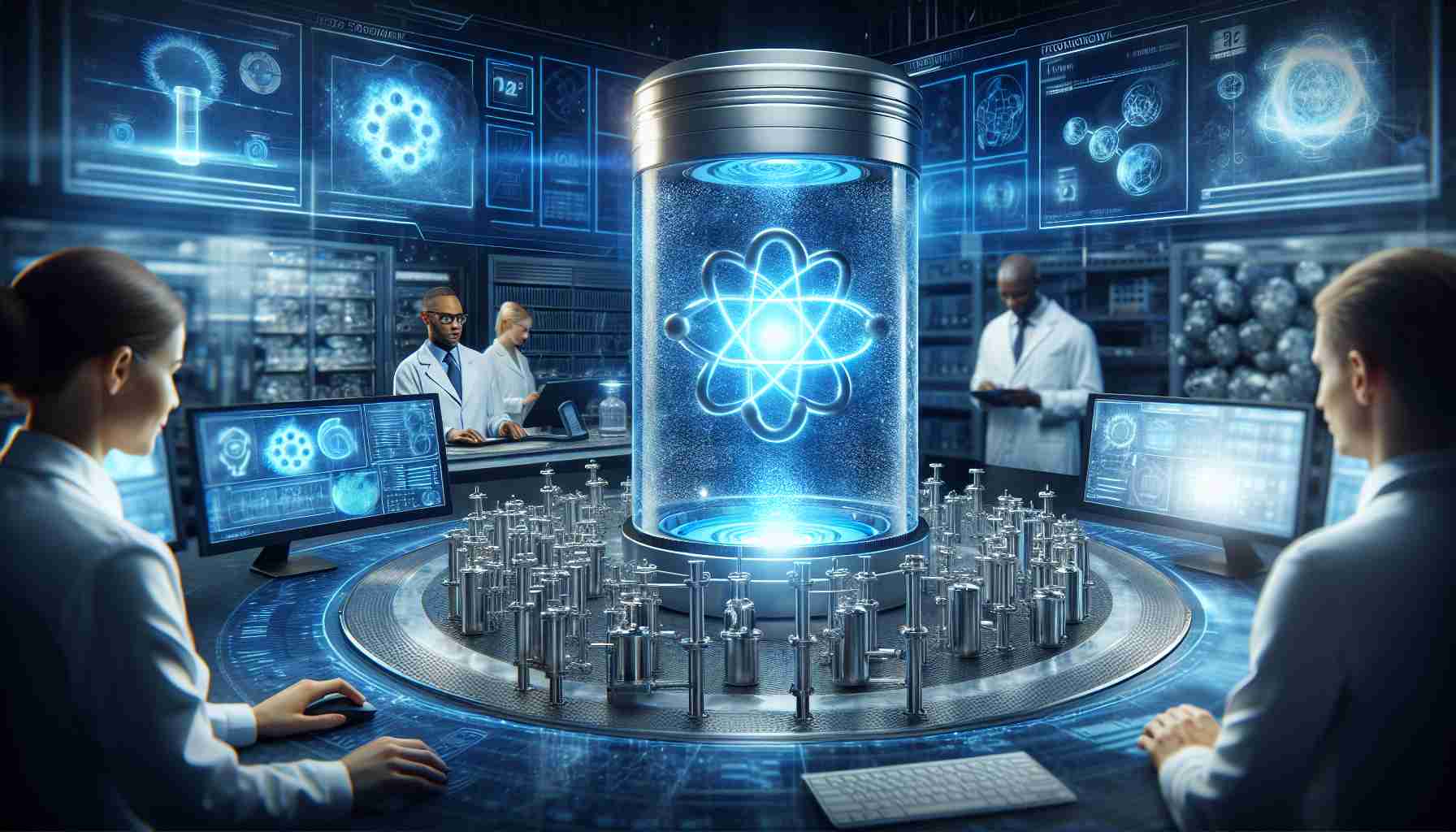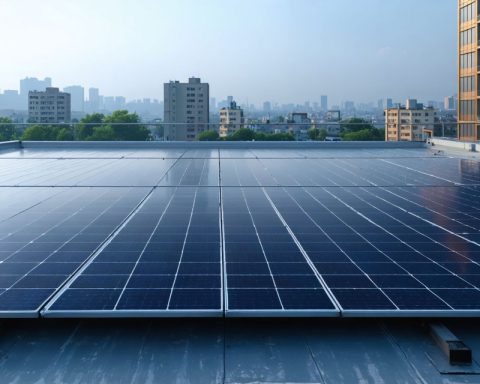Groundbreaking advancements in hydrogen storage are on the horizon as HD Korea Shipbuilding & Offshore Engineering (HD KSOE) has received an Approval in Principle (AiP) from DNV for its state-of-the-art vacuum-insulated liquefied hydrogen (LH2) tank. This innovative development marks a significant step towards providing efficient storage solutions for LH2, an essential player in the decarbonization of various industries, including transportation and power generation.
To address pressing storage challenges, HD KSOE has introduced a unique technique that dramatically shortens the vacuum creation time necessary for large tanks. This crucial innovation lays the groundwork for economically sustainable and safety-compliant large-scale liquid hydrogen storage. Industry experts acknowledge that bridging the gap between hydrogen production and consumption is vital for enhancing global energy resilience and expediting the transition to a hydrogen-based energy economy.
The testing of this new vacuum system was observed by industry representatives from prominent companies, including Woodside Energy and MOL. Additionally, HD KSOE is collaborating with Woodside Energy to design 80,000-cubic-meter hydrogen carriers equipped with this advanced storage technology. This partnership signals a shared commitment to fostering an integrated maritime transportation network for liquid hydrogen, paving the way for a more sustainable energy landscape worldwide.
Environmental and Economic Implications of Hydrogen Storage Innovations
The recent advancements in hydrogen storage technology by HD Korea Shipbuilding & Offshore Engineering (HD KSOE) represent a pivotal moment not just for the maritime sector, but for the broader global economy. As the world grapples with escalating climate change challenges, liquefied hydrogen (LH2) stands out as a clean alternative fuel that could decarbonize multiple industries. By making hydrogen storage more efficient and cost-effective, HD KSOE is addressing pivotal storage and transportation hurdles that have historically hindered hydrogen’s scalability.
The significance of this innovation extends beyond industrial logistics; its environmental impact could be profound. Transitioning to hydrogen energy may cut reliance on fossil fuels, thus reducing greenhouse gas emissions and propelling sustainable practices across sectors such as transportation and power generation. As these advancements gain traction, we may witness a shift in cultural perspectives towards energy use, encouraging societies worldwide to prioritize cleaner energy solutions.
Moreover, we can anticipate future trends encouraging increased investment in hydrogen infrastructure, likely transforming energy markets and enhancing energy security globally. As nations prioritize decarbonization, innovations like HD KSOE’s vacuum-insulated LH2 tanks could catalyze a swift transition towards a hydrogen-centric economy, avoiding the pitfalls of traditional carbon-intensive energy systems. Thus, the implications of these advancements resonate beyond the immediate technical achievements; they herald a necessary shift toward a more sustainable future, with long-lasting significance for society and the environment alike.
Revolutionizing Hydrogen Storage: The Future of Clean Energy Is Here
Groundbreaking Advancements in Hydrogen Storage
Hydrogen as a clean energy vector is gaining pivotal importance in the push towards decarbonization. With recent innovations in hydrogen storage solutions, industries can look forward to more efficient and sustainable methods of utilizing this versatile fuel source. One notable advancement comes from HD Korea Shipbuilding & Offshore Engineering (HD KSOE), which has recently received an Approval in Principle (AiP) from DNV for their cutting-edge vacuum-insulated liquefied hydrogen (LH2) tank.
Features of the New Hydrogen Storage Technology
HD KSOE’s vacuum-insulated tank presents a significant technological breakthrough. Key features include:
– Rapid Vacuum Creation: The new technique significantly reduces the time required to create a vacuum in large tanks, facilitating more efficient operations.
– Enhanced Safety Protocols: The design adheres to high safety standards, essential for handling liquefied hydrogen, a substance that requires meticulous safety measures due to its volatile nature.
– Scalability: Designed for large-scale applications, the tank can support the growing demands of various industries aiming to transition to hydrogen.
Use Cases and Industry Implications
The advancements in hydrogen storage technology open doors for multiple applications:
1. Transportation Sector: Hydrogen-powered vehicles, including trucks and ferries, can benefit from improved fueling infrastructure, driving quicker adoption of hydrogen as a clean alternative.
2. Power Generation: With the ability to store hydrogen more efficiently, energy companies can integrate it into their renewable systems, providing reliable power even when solar or wind sources are intermittent.
3. Maritime Transportation: The collaboration between HD KSOE and Woodside Energy to design 80,000-cubic-meter hydrogen carriers signifies a move towards a dedicated maritime hydrogen fuel transport network.
Pros and Cons of the New Storage System
Pros:
– Improved safety measures for large-scale hydrogen storage.
– Reduced vacuum creation time increases operational efficiency.
– Promotes the transition to hydrogen-based energy systems across various sectors.
Cons:
– The high initial development and implementation costs may hinder immediate widespread adoption.
– The infrastructure required for efficient hydrogen distribution is still in nascent stages.
Insights and Trends in Hydrogen Storage
The global energy landscape is witnessing a substantial shift with increasing investments in hydrogen technology. Industry experts predict that advancements like those made by HD KSOE will be critical in bridging the production and consumption gap of hydrogen, thus enhancing energy resilience worldwide. Economies globally are in various stages of integrating hydrogen solutions, with countries like Japan and Germany leading the charge.
Innovations in Hydrogen Storage
The focus on innovations such as HD KSOE’s vacuum-insulated tanks points toward a future where hydrogen can be stored and transported more safely and efficiently. Such advancements are part of a broader trend leveraging cutting-edge technology to meet sustainability goals set by international climate agreements.
Security and Sustainability Aspects
The approval of the new hydrogen storage technology also addresses crucial security concerns. Properly designed systems can mitigate risks associated with hydrogen storage, such as leaks and explosions. Moreover, by facilitating the storage of hydrogen, these advancements support sustainable practices in several industries, aiding their transition to lower carbon emissions.
Market Analysis
As the hydrogen economy matures, the demand for robust storage solutions will escalate. Companies investing in innovative storage technologies are likely to gain a competitive edge, potentially transforming market dynamics. The partnership between HD KSOE and Woodside Energy epitomizes strategic collaboration aimed at solidifying leading positions in the emerging hydrogen sector.
As the world shifts towards a hydrogen-centric energy system, advances like those introduced by HD KSOE represent critical developments that could shape the future energy landscape. With continued research and development, the potential for hydrogen storage solutions appears promising and has the capacity to significantly influence global energy strategies.
For more insights on the future of energy technologies, visit Hydrogen Now.

















